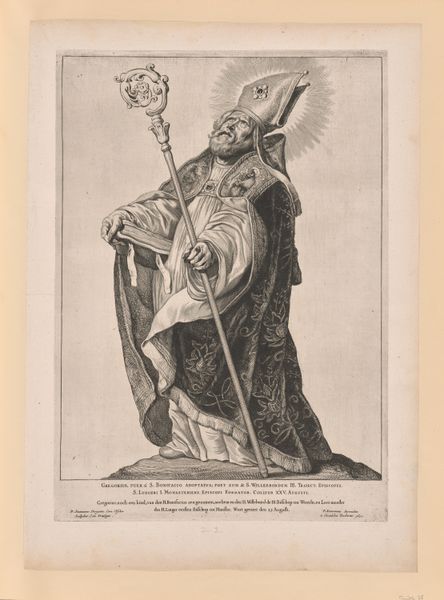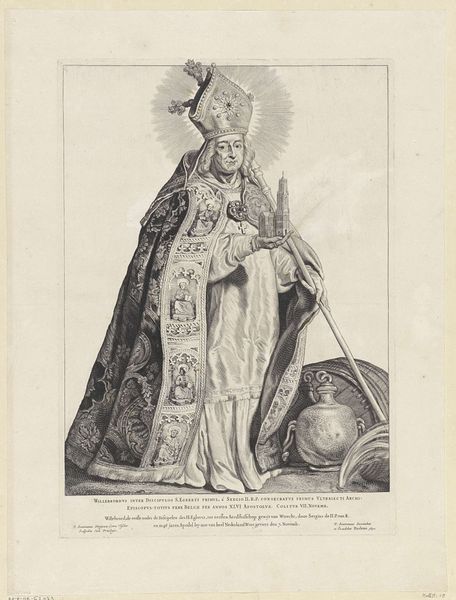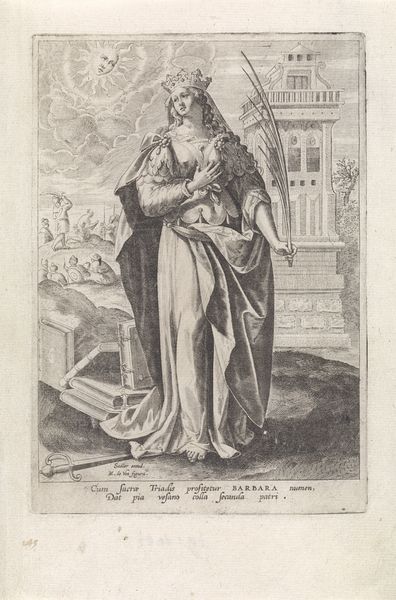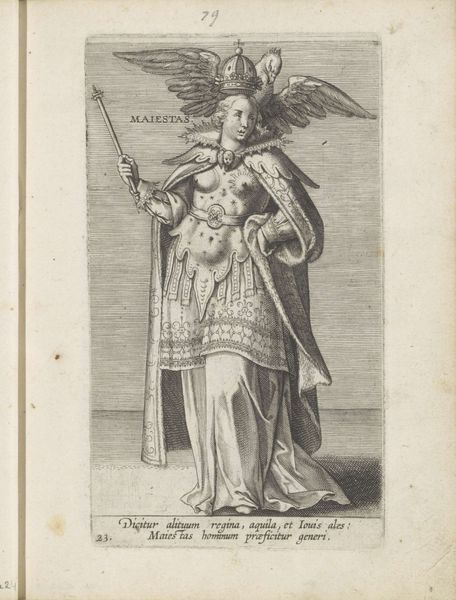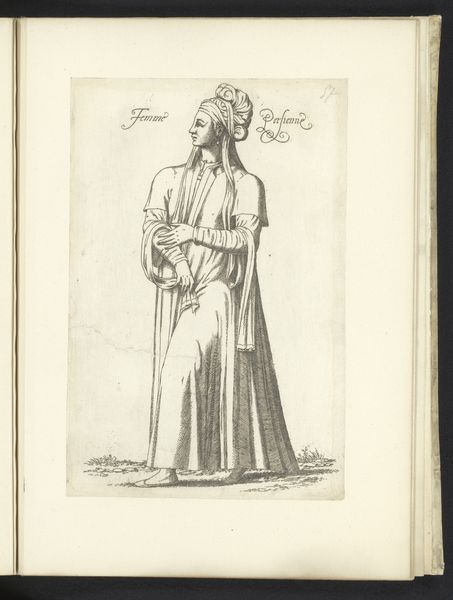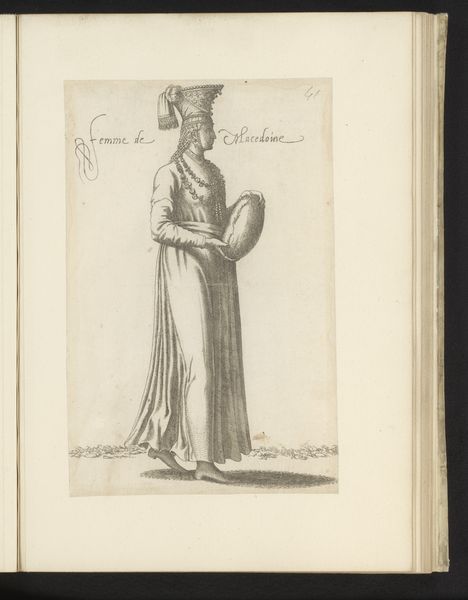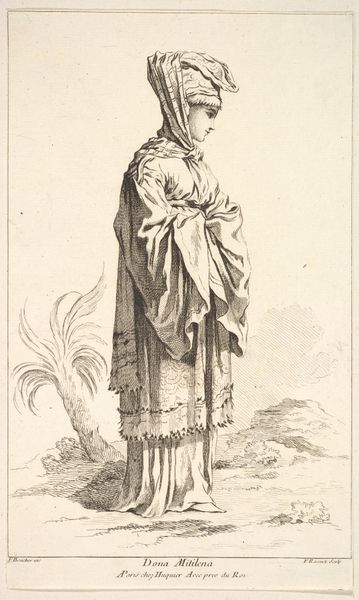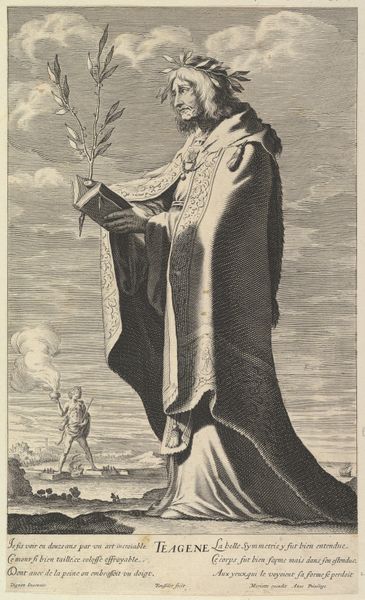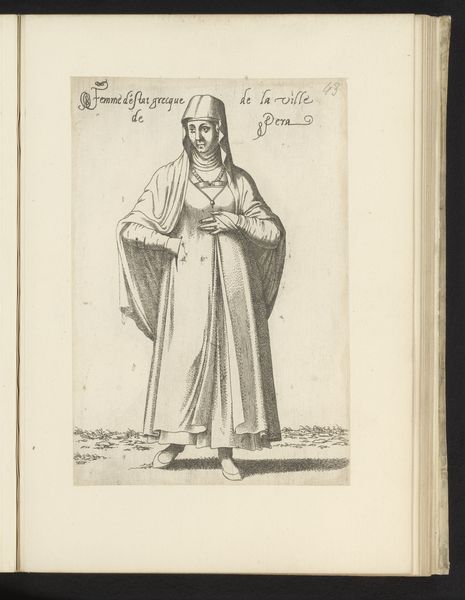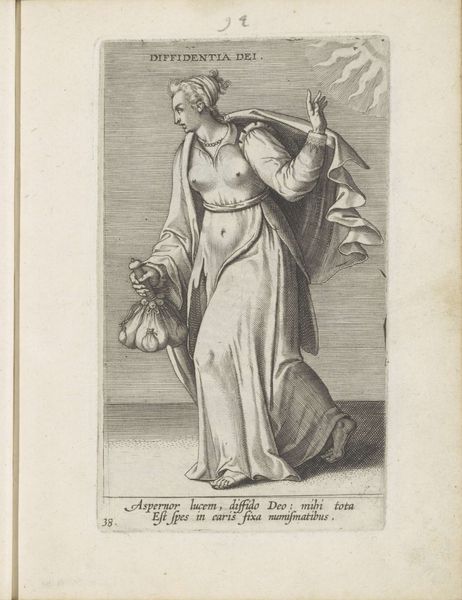
Saint Gregory of Utrecht, from Saints of the North and South Netherlands 1650
0:00
0:00
drawing, print, paper, engraving
#
portrait
#
drawing
#
baroque
# print
#
old engraving style
#
paper
#
history-painting
#
engraving
Dimensions: 445 × 315 mm (image/plate); 520 × 370 mm (sheet)
Copyright: Public Domain
Cornelis Visscher made this print of Saint Gregory of Utrecht in the mid-17th century. It’s an engraving, meaning that the artist used a tool called a burin to incise lines into a copper plate. Ink was then applied to the plate and wiped off, remaining only in the engraved lines. This was then printed onto a sheet of paper. Look closely at the image and you’ll see how Visscher varied the lines to create a sense of light and shadow, and to give texture to the Saint's elaborate garments. The material reality of the print – the crispness of the lines, the contrast of black and white – gives the image its graphic power. Engraving was a highly skilled craft, requiring years of training. It was also a commercial activity, used to reproduce images for a wide audience. This print is from a series depicting saints from the Northern and Southern Netherlands, reflecting a growing sense of national identity in the Dutch Republic. By appreciating the labor and context behind this image, we can move beyond traditional art history, appreciating the skill involved in printmaking, and its vital role in disseminating ideas and images in early modern Europe.
Comments
No comments
Be the first to comment and join the conversation on the ultimate creative platform.
